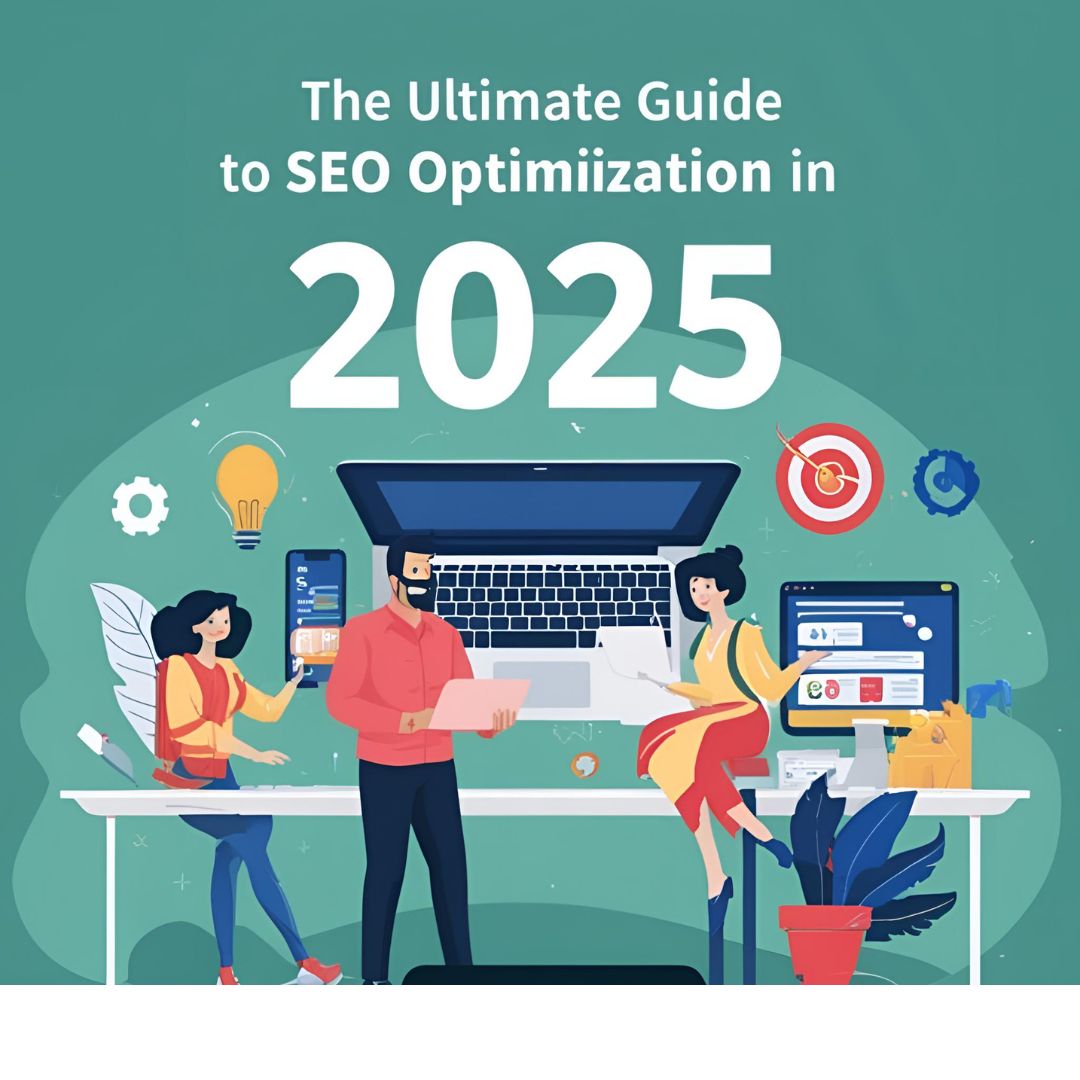Introduction
In today’s digital landscape, the escalating costs of online advertising have emerged as a significant concern for businesses and marketers alike. With numerous platforms competing for consumer attention, organizations often find themselves investing substantial budgets into paid advertising campaigns in hopes of gaining visibility. However, there is a growing recognition that achieving a sustainable online presence does not necessarily hinge on advertising expenditures. This blog post aims to explore how a strategic approach to search engine optimization (SEO) can serve as a cost-effective alternative to traditional advertising.
Leveraging SEO strategies can enable businesses to improve their ranking on search engine results pages (SERPs) organically, effectively driving traffic without the need for paid ads. This article recounts my personal experience of successfully outranking established competitors and bestsellers, all while keeping my advertising budget at $0. Through diligent application of various SEO techniques, I gained insights into how consistent, focused efforts can yield remarkable results.
Throughout this post, I will share the lessons learned from my journey, detailing specific strategies and methodologies that contributed to my success in a highly competitive landscape. These tactics are designed to empower those who seek to harness the potential of organic search traffic. By opting for SEO as a primary strategy, businesses can allocate their resources more intelligently, ultimately enhancing their online presence while mitigating costs associated with paid promotions.
Readers can expect to uncover actionable insights and practical tips that emphasize the importance of quality content, keyword optimization, and user experience in driving success through SEO. This approach not only demonstrates the feasibility of ranking well without financial investment in ads but also showcases the long-term benefits that accompany a robust organic presence.
Understanding SEO and Its Importance
Search Engine Optimization (SEO) is a strategic approach used to enhance the visibility of a website on search engines like Google. By optimizing various elements of a website, such as content, metadata, and technical features, businesses can improve their chances of appearing higher in search results. This organic visibility is crucial, as a significant percentage of users, often cited as over 70%, tend to click on the top search results rather than scrolling to the next page. This makes SEO a vital component of any successful digital marketing strategy.
One of the primary distinctions between SEO and paid advertising lies in their longevity and cost structure. While paid advertisements can drive immediate traffic to a website, they require continuous financial investment to maintain visibility. In contrast, SEO aims to build a solid foundation of organic traffic that remains over time. According to recent research, organic search results deliver 94% of clicks compared to paid ads, highlighting the effectiveness of SEO in reaching a broader audience without the ongoing costs associated with paid campaigns.
Moreover, the benefits of SEO extend beyond mere traffic. The traffic generated through organic search is often more valuable, leading to higher engagement and conversion rates. Visitors arriving from search engines typically possess a specific intent, indicating that they are actively seeking information or solutions related to the products or services offered. This targeted approach allows businesses to cultivate a more engaged audience, ultimately fostering customer loyalty and sustainable growth.
Investing in SEO is not merely about achieving higher rankings; it represents a commitment to providing valuable content that resonates with users. As search engines continue to evolve, adopting various algorithms aimed at improving user experience, businesses that prioritize SEO will be better equipped to adapt and thrive in a competitive landscape. The long-term value of organic traffic derived from robust SEO practices underscores its role as an indispensable marketing strategy.
My SEO Journey
Embarking on my SEO journey was a transformative experience, filled with initial challenges that shaped my understanding of search engine optimization. Initially, I was overwhelmed by the vast amount of information available and the technical jargon prevalent in the SEO community. My entry point into SEO was largely driven by a desire to increase organic traffic to my blog without leaning on paid advertising. This motivated me to explore various free resources and tools that could facilitate my learning.
One of the first steps I took was to familiarize myself with the basics of SEO through online courses and articles. Websites like Moz and Search Engine Journal became invaluable resources, offering comprehensive guides that clarified concepts such as keyword research, on-page optimization, and link building. I also invested time in understanding my target audience, which led me to utilize tools like Google Analytics and Answer the Public to gather insights. These tools provided me with data on user behavior and popular queries, helping guide my content strategy.
As I delved deeper, I implemented specific strategies to enhance my website’s visibility. For example, I focused on creating high-quality, relevant content that answered specific questions my audience had. I optimized my posts with well-researched keywords, ensuring they appeared naturally within the flow of the content. Additionally, I began building relationships with other bloggers to create backlinks, which significantly improved my domain authority.
Monitoring my progress became crucial. I used Google Search Console to track performance metrics and identify areas for improvement. Over time, these efforts helped me outrank some of the established bestsellers in my niche, validating the effectiveness of my SEO strategies. This journey has not only broadened my technical knowledge but also solidified my belief in the power of organic search as a fundamental component of digital marketing.
Key SEO Strategies That Led to Success
In the pursuit of achieving significant organic traffic without spending on ads, several key SEO strategies proved to be instrumental in my success. Each strategy contributed uniquely, enhancing visibility and drawing potential customers.
The first focal point was extensive keyword research. Understanding the search intent of my target audience allowed me to identify high-value keywords with lower competition. Tools like Google Keyword Planner and SEMrush were utilized to find these keywords. For instance, by exploring long-tail variants related to my niche, such as “best eco-friendly products for home,” I was able to attract users who were looking for specific solutions rather than generic options.
Next, I implemented robust on-page SEO techniques to optimize my website’s content. This involved ensuring that each page had a clear structure, with headers organized in a way that facilitated easy navigation and understanding. I regularly incorporated the identified keywords naturally into the content, making sure they fit seamlessly into the context. An example of this was when I wrote a blog post centered around eco-friendly home tips, ensuring the main keyword appeared in the title, subheadings, and throughout the text, enhancing relevance and ranking potential.
Link building also played a crucial role in my strategy. By engaging with reputable websites for guest posting opportunities, I was able to acquire high-quality backlinks that significantly boosted my site’s authority. For instance, writing a guest post for a popular environmental blog and naturally linking to my articles not only drove traffic but also improved my search engine ranking.
Lastly, I focused on overall site optimization, which encompassed improving load speed, enhancing mobile usability, and ensuring a secure browsing experience. These technical improvements were critical, as they impacted user experience directly, reflecting positively on my SEO performance. Implementing tools like Google PageSpeed Insights and making necessary adjustments ensured that visitors enjoyed a seamless experience on my site.
Research-Backed Data and Statistics
The effectiveness of search engine optimization (SEO) compared to paid advertising has been thoroughly examined through various research studies and statistics. A significant report by BrightEdge found that organic search accounts for roughly 53% of all website traffic, highlighting the essential role SEO plays in attracting visitors without incurring advertising costs. In contrast, paid ads, while effective in the short term, contribute to only about a 15% share of traffic. This data not only showcases the predominance of organic search but emphasizes the potential long-term benefits of investing in SEO strategies.
Moreover, a study conducted by HubSpot revealed that companies that prioritize blogging and content marketing, which are intrinsic components of an effective SEO strategy, receive 97% more inbound links than those that do not. This increase in inbound links directly correlates to improved search rankings and visibility, reinforcing organic traffic generation methods over immediate but fleeting paid ads. In addition, a report by SEMrush indicated that high-ranking pages often exhibit longer content, with an average length of 1,890 words, further illustrating the importance of comprehensive, high-quality content as part of an SEO plan.
Another relevant study from Ahrefs concluded that approximately 90.63% of webpages do not receive any organic traffic from Google. The reason is clear: these pages often lack the optimization that would make them rank better. In contrast, properly optimized content shows marked performance metrics, demonstrating how investing in detailed keyword research, effective site structure, and quality backlinks can significantly outpace the results of paid advertising campaigns. These insights reveal that a methodical approach to SEO not only enhances visibility but is a cost-effective strategy for long-term growth and success in the digital landscape.
SEO Best Practices for Beginners
Embarking on an SEO journey can be both exciting and daunting for beginners. Implementing effective SEO best practices is crucial for improving visibility in search engine results and driving organic traffic to a website. Here are several actionable steps that novices can take to enhance their SEO efforts.
First and foremost, keyword integration is essential. Conduct thorough research using keyword planning tools to identify relevant keywords pertinent to your niche. These keywords should be naturally incorporated throughout your content, including headings, body text, and image alt attributes. Striking a balance between readability and keyword optimization is vital—overstuffing keywords can lead to penalties from search engines.
Optimizing titles and meta descriptions also plays a significant role in SEO success. The title should contain the focus keyword or phrase and be engaging enough to encourage clicks. Similarly, a well-crafted meta description should summarize the content effectively and include relevant keywords, providing search engines with a clear understanding of the page’s topic while enticing users to click through.
Website speed is another critical factor that cannot be overlooked. A slow-loading site can negatively impact user experience and search engine rankings. Tools such as Google PageSpeed Insights can help identify areas for improvement, ensuring site performance remains optimal. Simple measures, like optimizing images and leveraging browser caching, can yield significant enhancements.
Finally, enhancing content quality should be at the forefront of any SEO strategy. Search engines prioritize well-researched, informative, and engaging content. Creating resources that answer users’ questions, address their needs, and keep them engaged will naturally improve dwell time and reduce bounce rates, ultimately boosting search rankings. By focusing on these fundamental SEO best practices, beginners can lay a solid foundation for their online presence and successfully navigate the world of search engine optimization.
Measuring SEO Success
To effectively measure the success of your Search Engine Optimization (SEO) efforts, it is crucial to utilize a variety of metrics and tools. The primary indicators of SEO success include website traffic, keyword rankings, conversion rates, and user engagement metrics. Each of these elements plays a significant role in understanding the effectiveness of your SEO strategy.
Tracking website traffic can be efficiently accomplished through tools such as Google Analytics. This tool provides insights into how many visitors your website receives, where they are coming from, and what content they engage with the most. By analyzing this data, you can determine which SEO strategies are working effectively and which areas require improvement. It is important to regularly monitor organic traffic, as fluctuations might indicate successful optimizations or the need for further adjustments.
Keyword rankings are another critical metric to assess your SEO performance. Tools like SEMrush, Ahrefs, and Moz can help track the positioning of your targeted keywords in search engine results pages (SERPs). Maintaining a close watch on these rankings will enable you to identify trends over time and determine whether your optimizations yield positive results.
Conversion rates reflect the percentage of visitors who complete a desired action on your site, such as signing up for a newsletter or making a purchase. Increasing conversion rates not only signifies effective SEO but also indicates that your website’s content is resonating with your audience. Employing tools such as Google Analytics, you can analyze conversion funnels and make strategic enhancements to optimize user experience.
Furthermore, user engagement metrics, such as bounce rate, time on page, and pages per session, provide a deeper understanding of how visitors interact with your site. High engagement suggests that users find your content valuable, while lower engagement may require you to refine your approach. Regularly analyzing these data points is essential for continuously improving your SEO strategies and overall website performance.
Engagement and Community Building
In the landscape of search engine optimization (SEO), engagement and community building play pivotal roles in enhancing outcomes. When individuals interact with content, it signals to search engines that the material is valuable and relevant. This engagement can take various forms, including comments on blog posts, social media shares, and interactions through email newsletters. Such connections not only foster loyalty among readers but also contribute positively to a website’s SEO ranking.
A significant aspect of effective engagement is the creation of a community around your brand or content. Social media platforms serve as excellent tools for building this community. By actively participating in discussions, responding to comments, and sharing user-generated content, you can create a welcoming atmosphere that encourages followers to engage more. Moreover, incorporating calls-to-action within your posts can guide readers towards sharing their opinions or experiences, further increasing interaction.
Encouraging reader interaction goes beyond just responding to comments. Integrating features such as polls, quizzes, or feedback requests in your articles can motivate audiences to participate. Email marketing also offers a powerful avenue for fostering relationships, allowing for personalized interactions that can make subscribers feel valued. Regular newsletters with engaging content not only keep your audience informed but also invite dialogue, which can enhance community ties.
Finally, leveraging the insights gained from these interactions is crucial. Analyzing comments and feedback can provide valuable input on what resonates with your audience, allowing you to tailor your content accordingly. This approach not only improves engagement but can also enhance your SEO strategy, as your content becomes increasingly aligned with audience interests and preferences.
Conclusion and Key Takeaways
In assessing the efficacy of search engine optimization (SEO) compared to traditional paid advertising methods, it becomes clear that a strategic approach to SEO can yield significant advantages. Throughout this article, we explored various techniques that enable websites to achieve higher rankings in search results without incurring the costs associated with ads. Key takeaways highlight the importance of keyword research, on-page optimization, quality content creation, and building authoritative backlinks.
Firstly, implementing targeted keyword strategies is essential for aligning web content with user intent, which enhances discoverability. By utilizing tools to identify high-impact keywords relevant to your niche, content creators can drive organic traffic effectively. Additionally, on-page SEO techniques, such as optimizing meta tags, headings, and images, contribute to improving search engine visibility, ensuring that content is structured and easily understood by both users and search engines.
Moreover, crafting high-quality content that addresses the needs and concerns of the target audience establishes authority and trustworthiness. Valuable content not only attracts readers but also encourages sharing and backlinks, further boosting SEO performance. The focus on link-building from credible sources cannot be overstated, as it plays a pivotal role in enhancing a site’s credibility and ranking potential.
As a proactive approach, these insights can empower readers to transition from dependence on paid ads to a sustainable SEO-centric model. Implementing these techniques can lead to organic growth, creating a more resilient online presence. We invite readers to share their experiences regarding SEO strategies implemented, or pose any questions in the comments below, fostering a collaborative conversation about the effectiveness of organic search strategies.



